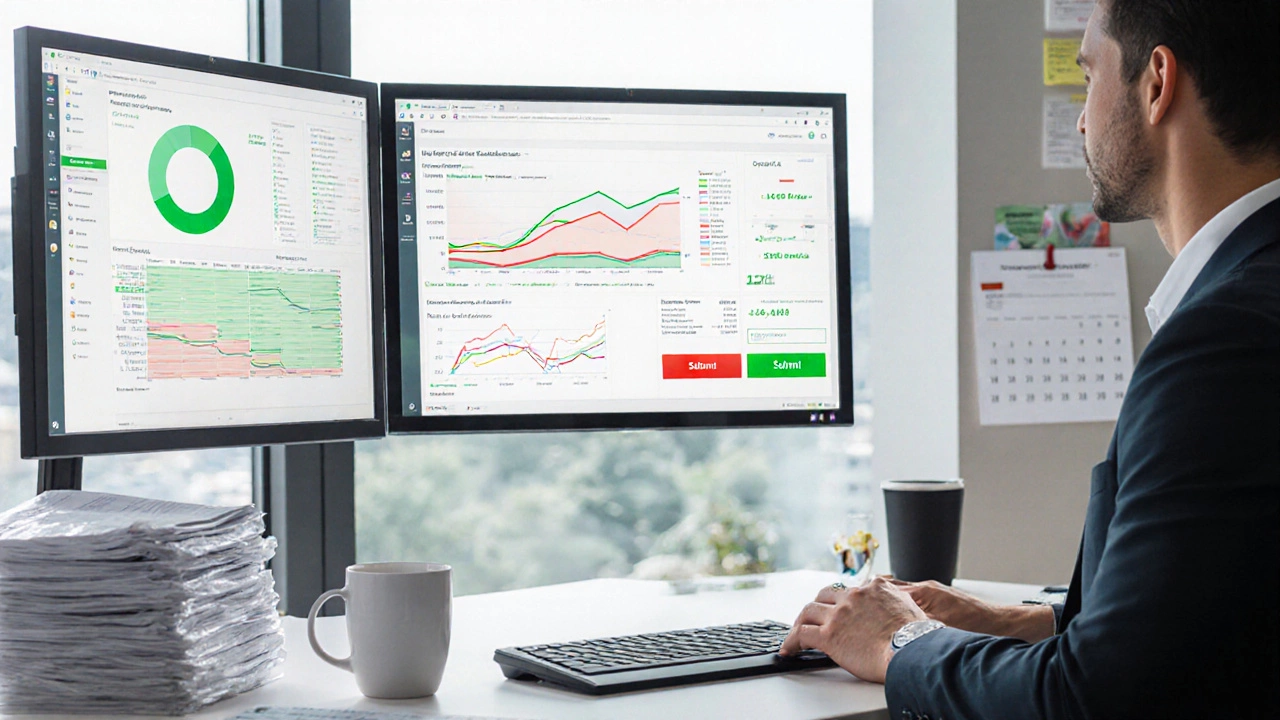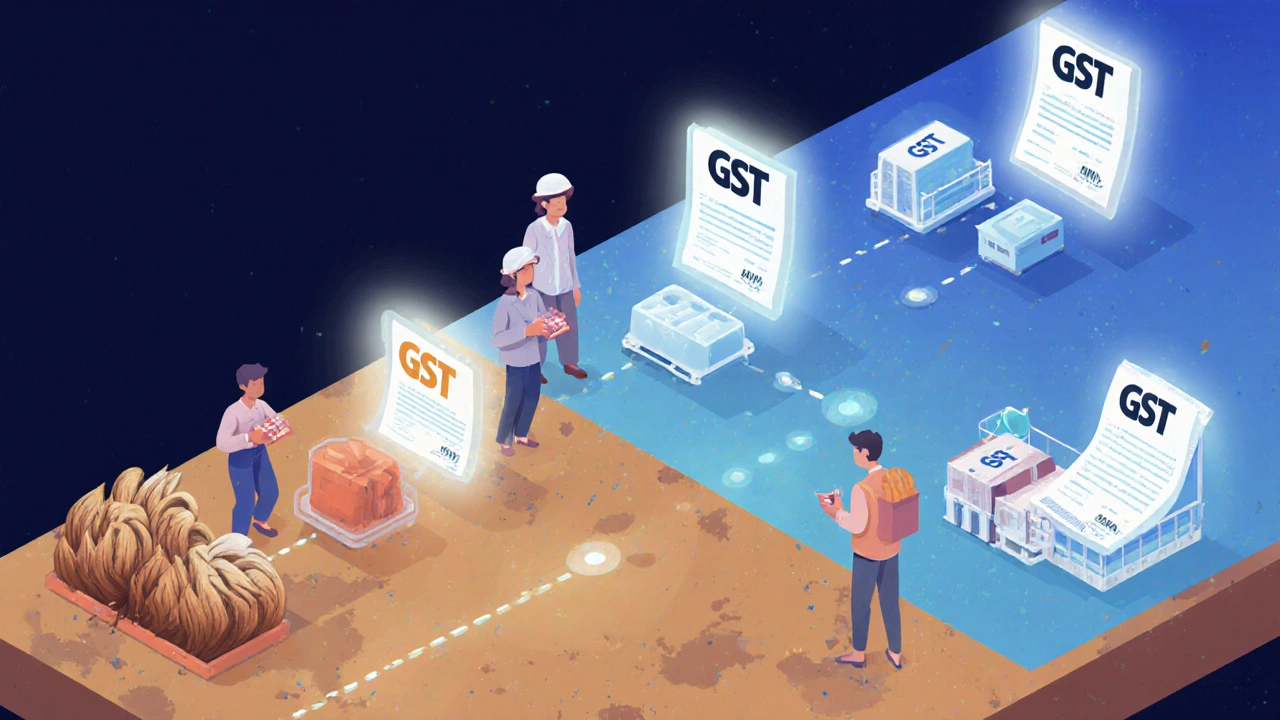GST Accounting Method Comparison Tool
Cash Basis GST
Records GST when cash is actually received or paid.
- Output tax on receipt of payment
- Input tax credit when supplier invoice is paid
- Good for tight cash flow
- Simpler record keeping
Accrual Basis GST
Records GST when invoices are issued, regardless of cash flow.
- Output tax on issuance of tax invoice
- Input tax credit when valid tax invoice is received
- Better for accurate profit measurement
- Required for larger businesses
Decision Guide
Recommended Approach:
Important Notes
- Cash basis is often allowed for small businesses with limited credit sales
- Accrual basis provides more accurate financial reporting
- Always verify local regulations and thresholds with your tax authority
- Consider consulting a tax professional for complex situations
When it comes to handling GST accounting method, businesses often wonder which approach keeps their books clean and tax filing smooth. The choice between cash and accrual can affect cash flow, compliance deadlines, and even the amount of tax you owe each period.
What is GST?
GST is a value‑added tax imposed on the supply of goods and services at each stage of the production and distribution chain. It is collected by registered businesses and later remitted to the tax authority. While the tax rate varies by jurisdiction, the principle remains the same: the seller charges GST on sales (output tax) and can claim back GST paid on purchases (input tax).
Why the Accounting Method Matters
GST isn’t just a line on your tax return; it shapes when you record revenue, expenses, and the resulting tax liabilities. The accounting method determines the timing of:
- When you recognize sales and the associated output tax.
- When you can claim input tax credits for purchases.
- When you must file your GST return.
Choosing the right method helps align tax payments with actual cash movement, avoiding surprise outflows.
Cash Basis Accounting for GST
Cash basis accounting is a method where transactions are recorded only when cash is received or paid. For GST, this means you account for output tax only when you receive payment from a customer, and you claim input tax credit only when you settle the supplier’s invoice.
Key points:
- Helpful for businesses with tight cash flow, as tax liability aligns with cash on hand.
- Simplifies record‑keeping for small traders who receive payment at the point of sale.
- Not suitable if you have significant credit sales or need to match expenses to the period they relate to.

Accrual Basis Accounting for GST
Accrual basis accounting is a system that records revenue and expenses when they are earned or incurred, regardless of cash movement. Under this method, you recognize output tax when you issue a tax invoice - a document that details the GST charged on a sale, and you claim input tax credit as soon as you receive a valid tax invoice from a supplier.
Advantages include:
- More accurate matching of income and expenses, giving a true picture of profitability.
- Required for larger businesses or those whose turnover exceeds the local GST registration threshold.
- Facilitates better forecasting for tax planning.
Choosing Between Cash and Accrual
The decision often hinges on three factors: business size, cash‑flow stability, and regulatory requirements.
| Aspect | Cash Basis | Accrual Basis |
|---|---|---|
| When tax is recorded | Upon receipt of payment | Upon issuance of tax invoice |
| Input tax credit claim | When supplier invoice is paid | When valid tax invoice is received |
| Impact on cash flow | Minimizes upfront GST outflow | May require upfront GST payment |
| Complexity | Lower - fewer timing adjustments | Higher - need to track accounts receivable/payable |
| Regulatory suitability | Allowed for small entities in many jurisdictions | Generally required for larger or listed companies |
In practice, many medium‑size enterprises adopt a hybrid approach - using accrual for internal reporting while applying cash for GST filings where the law permits.
Impact on Input Tax Credit and Output Tax
Input Tax Credit (ITC) is the amount of GST paid on business purchases that can be offset against output tax liability. The timing of ITC recovery follows the chosen accounting method. Similarly, Output Tax is the GST collected from customers on taxable supplies. Accurate tracking of both ensures you don’t over‑pay or under‑pay the tax authority.
Key compliance tip: always retain proper tax invoices - they serve as the evidence needed to claim ITC and report output tax correctly.

Step‑by‑Step GST Bookkeeping
- Record each sale with a tax invoice number, date, and GST amount.
- Classify the transaction as cash‑basis or accrual‑basis based on your method.
- When you receive payment, update the GST payable account (cash) or move the invoice to ‘settled’ (accrual).
- For every purchase, capture the supplier’s tax invoice and log the input tax credit.
- Reconcile GST payable and receivable monthly to avoid mismatches.
- Prepare and file your GST return - the periodic return reporting output tax, input tax credit, and net GST liability before the statutory deadline.
Using accounting software that supports GST modules can automate many of these steps, reducing manual errors.
Common Pitfalls & How to Avoid Them
- Missing tax invoices: Without a valid invoice, ITC claims are rejected. Keep digital backups organized by supplier and date.
- Mixing methods: Switching between cash and accrual mid‑year without proper adjustment can trigger audits. If you must change, file a formal amendment with the tax authority.
- Late filing: Penalties accrue quickly. Set calendar reminders a week before each filing deadline.
- Incorrect classification of supplies: Some items are exempt or zero‑rated. Ensure you apply the correct GST rate to avoid over‑charging customers.
Quick Takeaways
- Cash basis records GST when cash moves; accrual records GST when invoices are issued.
- Choose cash if cash flow is tight and you have few credit sales.
- Choose accrual for accurate profit measurement and if required by law.
- Always keep proper tax invoices to claim input tax credits.
- Regular reconciliation prevents mismatched GST liabilities.
Frequently Asked Questions
Can a small business switch from cash to accrual GST accounting?
Yes, but you must notify the tax authority and file a transitional return that adjusts for the timing differences. It’s wise to consult a tax professional to ensure the switch complies with local regulations.
Do I need to use accrual GST accounting if I’m registered for GST?
Not always. Many jurisdictions allow small registrants to opt for cash basis. Check the threshold set by your tax authority - for example, in India, businesses with turnover below ₹5crore can choose cash basis.
How often must I file a GST return?
Filing frequency varies: monthly, quarterly, or annually, depending on the jurisdiction and the size of your business. Most countries require at least quarterly filing for registered entities.
What happens if I claim an input tax credit without a valid tax invoice?
The tax authority will reject the claim, and you may be liable for interest and penalties on the unclaimed amount. Keeping digitized copies of every tax invoice prevents this issue.
Is GST accounting the same as income‑tax accounting?
No. GST focuses on consumption tax collected on sales and reclaimed on purchases, while income tax deals with profits after expenses. Both run on different rules and filing cycles.
